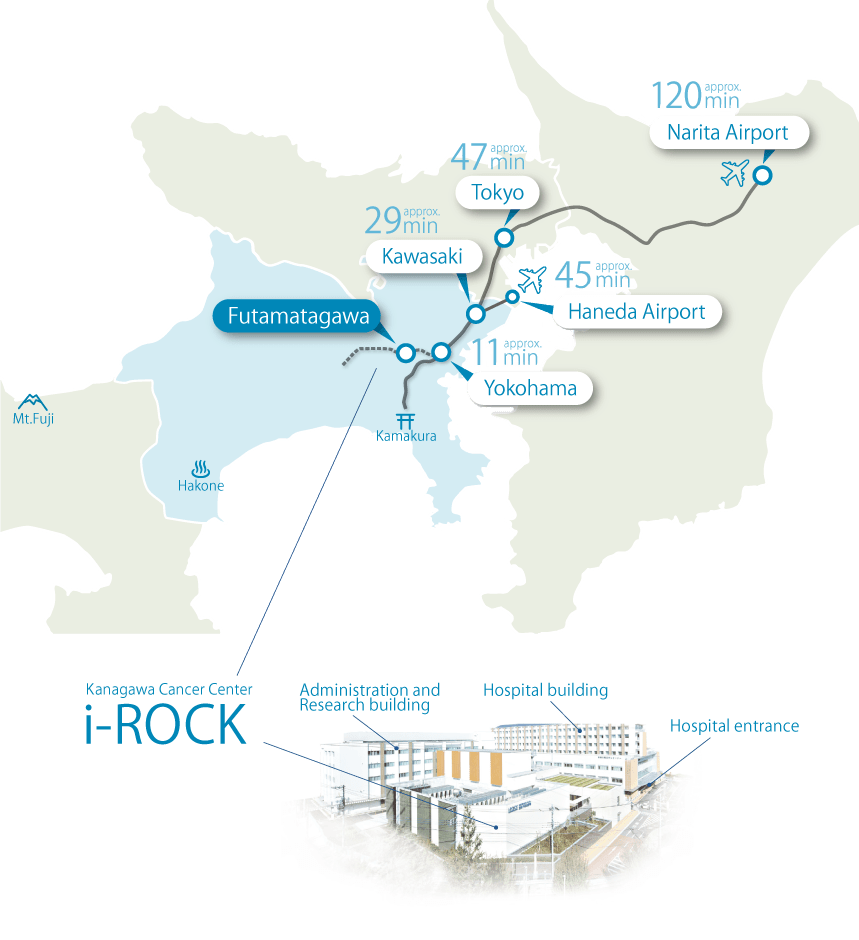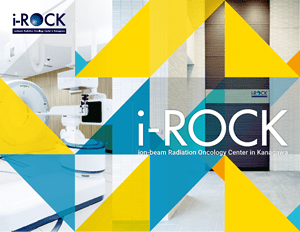
Safe, Sustainable and Scientific Radiotherapy
Carbon-ion radiotherapy
Carbon-ion radiotherapy is a most advanced radiotherapy.
Multidisciplinary approach with surgery, chemotherapy and radiotherapy is taken for cancer treatment. The use of carbon-ion beam is the state-of-art technology of particle radiotherapy while photon beam is widely used for conventional radiotherapy.
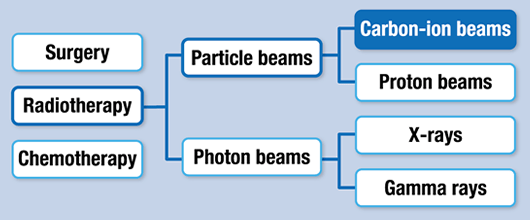
Main treatment methods for cancer
Comparison of cancer therapies
| Surgery | Radiotherapy | Chemotherapy | |
|---|---|---|---|
| Advantages |
|
|
|
| Disadvantages |
|
|
|
| Advantages |
|
|
|
Carbon-ions are accelerated up to 70% of the light speed and irradiated into deeply seated tumors.
What is carbon-ion?
The charged particles heavier than helium is called a "heavy-ion". Carbon-ion has been clinically available for cancer therapy to date. The weight of carbon-ion is 12 times heavier than proton.
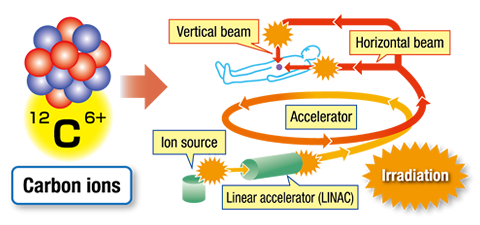
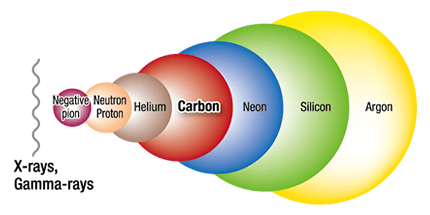
Features of Carbon-ion Radiotherapy
Precise irradiation of deeply seated tumor
One of the fundamental physical features of carbon-ion beams is delivering relatively low dose en route to the target and releasing the greatest energy around the end of beam range. This characteristic is called "Bragg curve", and the point of maximum energy deposition is called "Bragg peak". The technical strategy of carbon-ion radiotherapy is to adjust the position and shape of the Bragg peak to the region of tumor in three dimensionally. As a result, the dose can be concentrated on the target while suppressing the dose of surrounding normal tissues.
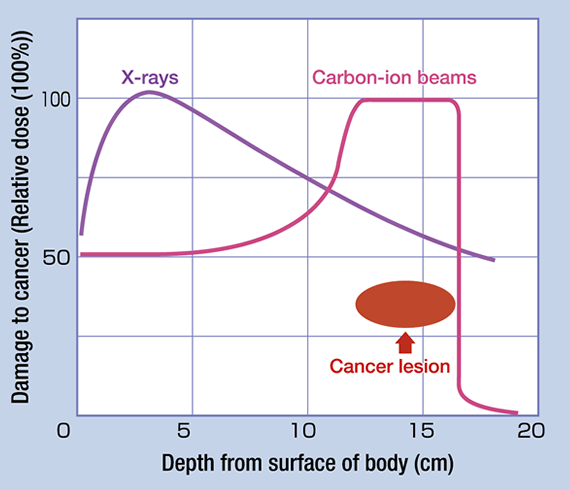
Strong power of killing cancer cells
The power of carbon-ion radiotherapy to kill cancer cells is much stronger than photon and proton beams.
Compared to photon beams and proton beams, carbon-ion radiotherapy is highly capable of killing cancer cells. It is therefore more effective on tumors which is resistant to conventional photon/proton radiotherapy.
Shorter period of treatment
For example, prostate cancer requires around 40 irradiations with intensity-modulated radiation therapy (IMRT), whereas carbon-ion radiotherapy requires only 12, a much shorter period of time.
At Kanagawa Cancer Center, carbon-ion radiotherapy is administered with 4 to 16 times of irradiation, depending on the disease.
The term “short period” here refers to the number of times of irradiation compared to conventional radiotherapy.
A Case Treated by Carbon-ion Radiotherapy
Pancreas cancer(Before and after Carbon-ion bram radiotherapy)

Tumor sites for Carbon-ion Radiotherapy at i-ROCK
The following tumors are current indication for carbon-ion radiotherapy for the cure of cancer

Cancers Unsuitable for Carbon-ion Radiotherapy
Cancer with systemic metastases Leukemia and malignant lymphoma
i-ROCK Facility
The i-ROCK, Ion-beam Radiation Oncology Center in Kanagawa, is the state-of-art facility for carbon-ion radiotherapy at Kanagawa prefecture in Japan. The i-ROCK started the clinical operation in December 2015. The i-ROCK is the 11th facility for carbon-ion radiotherapy in the world and 5th facility in Japan.

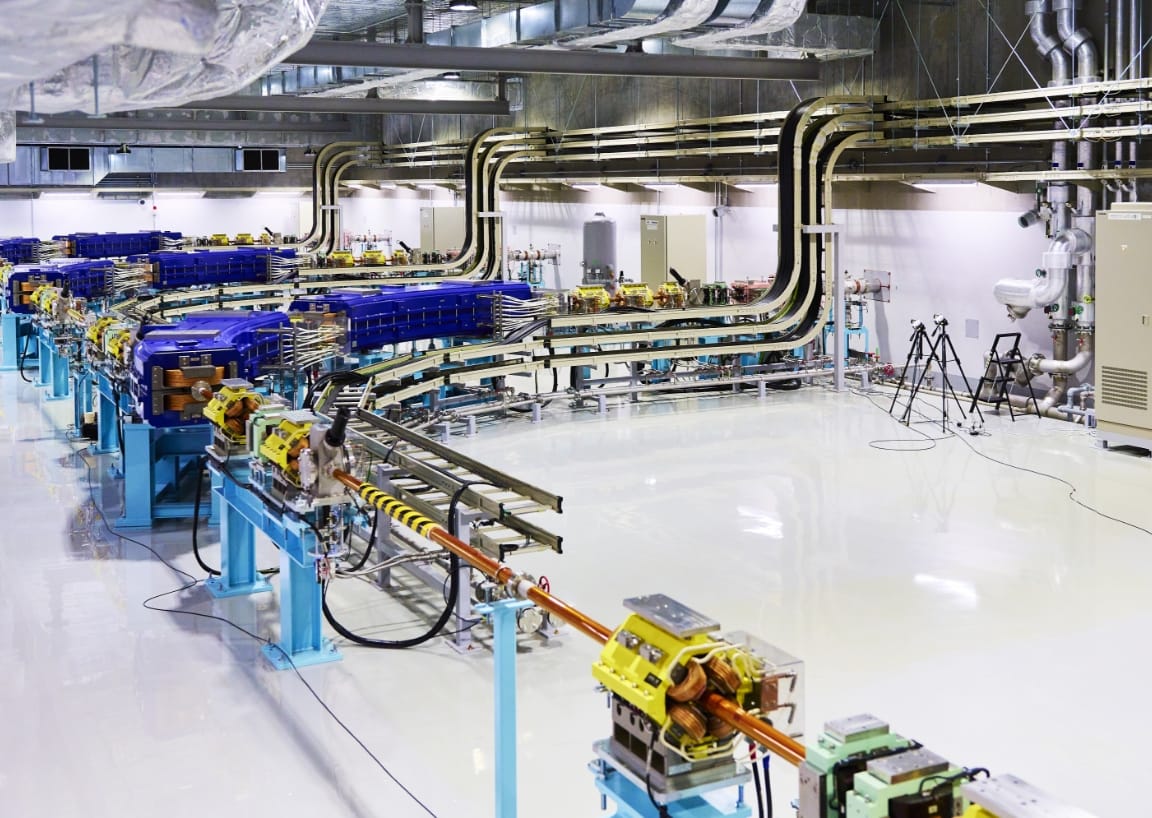
Video "Carbon ion Radiotherapy System"
* Click the  button to start the video.
button to start the video.
* Pay attention to volume level due to the background music.
* prepared by Toshiba Corporation
Feature of i-ROCK
Multidisciplinary cancer treatment
i-ROCK is the carbon-ion radiotherapy facility at Kanagawa Cancer Center(KCC). KCC is the Designated Cancer Care Hospital of Japan, located in Kanagawa prefecture. A multidisciplinary approach combining surgery, radiotherapy and chemotherapy is adopted throughout KCC. Medical specialists and staff at KCC provide comprehensive care, individualized for each patient's disease conditions and quality of life.
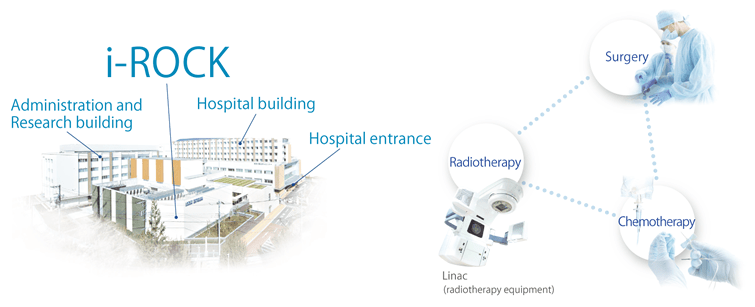
State-of-the-art-irradiation technology
We provide carbon-ion radiotherapy using the latest irradiation technology called the fast three-dimensional scanning irradiation method. This technique uses a narrow carbon-ion beam ejected from an accelerator to precisely irradiate the tumor in a fill-in manner. This irradiation method makes it possible to concentrate a high dose of radiation only on the tumor according to its three-dimensional shape (size and form). In addition, the effect on the surrounding normal tissues can be suppressed compared to conventional irradiation methods, which is expected to reduce side effects. Furthermore, treatment planning is more efficient, and the time required to start irradiation can be shortened, enabling more rapid treatment.
* Click the  button to start the video.
button to start the video.
Robotic treatment couch and in-room CT in every treatment room

Treatment room
A robotic treatment couch has been introduced for precise computer-controlled positioning. By moving the patient's body to the optimal treatment position on a millimeter-by-millimeter basis, we minimize misalignment of irradiation and achieve more accurate treatment. In addition, CT is installed in all treatment rooms to quickly identify changes in the shape of the tumor and the body during treatment and readjust the treatment plan as necessary to provide more precise and effective treatment.
The Radiation Oncology Center in Kanagawa for highly precise radiotherapy
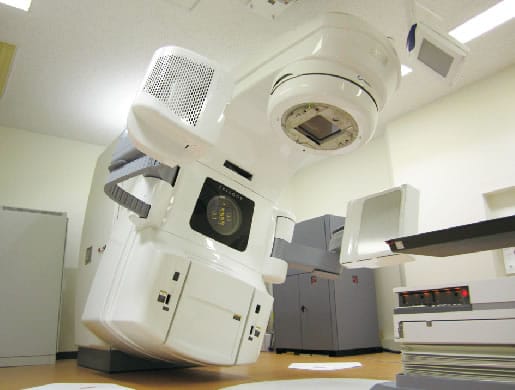
High-precision radiotherapy device
of linear accelerator (LINAC) machine
In radiotherapy, we can provide not only particle radiotherapy but also high-precision photon radiotherapy.
The department of radiation oncology in Kanagawa Cancer Center(KCC) provides high-accuracy radiotherapy such as stereotactic radiation therapy (SRT) and intensity modulated radiation therapy (IMRT), by use of four linear accelerators including the latest machine. KCC implements both LINAC and carbon-ion radiotherapy machines and offers a full spectrum of radiotherapy for patients with any type and stage of cancer.
Equipment overview
Specifications of the equipment
The state-of-the-art irradiation system with "pencil-beam" scanning method is equipped at i-ROCK. The highly accurate carbon ion radiotherapy targeting tumor tissue is available.
| Type of radiation | Carbon |
|---|---|
| Maximum acceleration energy | 430 MeV/n |
| Maximum irradiation field | 15 × 20 cm² |
| Intensity (number of accelerated particles) | 1.2 × 10^9 pps |
| Number of treatment rooms | 4 (horizontal: 2, vertical: 2) |
| Irradiation method | Scanning |
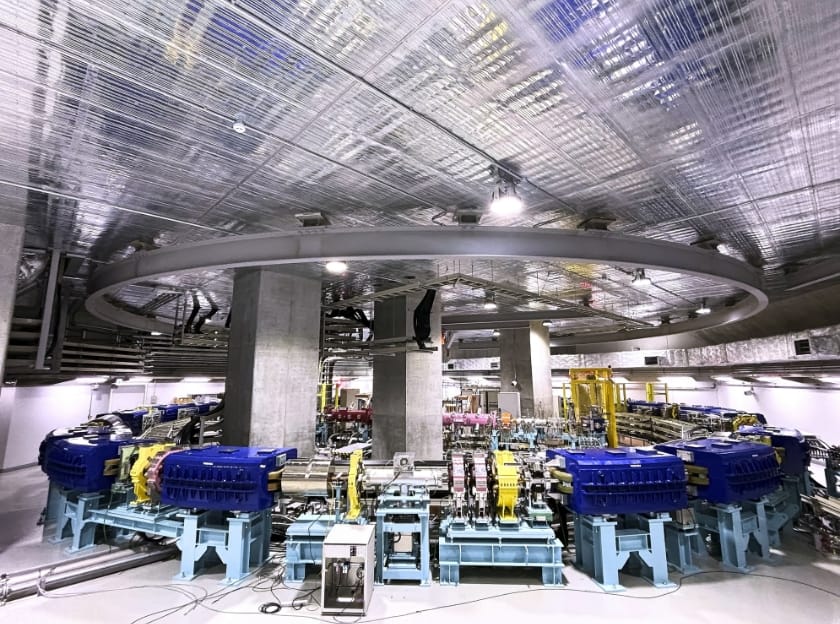
Facility Overview
Specifications of the facility
| Construction site | Within the grounds of Kanagawa Cancer Center |
|---|---|
| Structure | Reinforced concrete |
| Number of stories | One floor underground and two floors above ground (connected to the Hospital Building on the first basement floor) |
| Building area | 3,009.12 m² |
| Floor area | 6,999.47 m² |
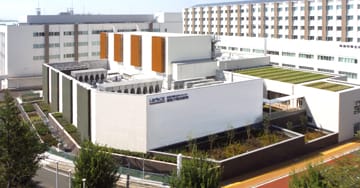
Information on accepting international patients from overseas
International patients who would like to undergo carbon-ion radiotherapy in our Cancer Center will be asked to follow the required procedures via a Medical Coordinator (Accredited Medical Travel Assistance Company: AMTAC *) so that we can provide efficient and safe medical care.
Our Cancer Center currently has a partnership agreement for coordination services with the following agency, which has AMTAC certification. If you would like to receive our health care services, please contact the agency below rather than our Cancer Center.
* Please note that the patient will have to pay for the cost of coordination.
[International patients eligible for our health care services]
International patients who are not covered by the public health insurance plan in Japan.
*In order to ensure the provision of safe patient care, our Cancer Center will ask the health care coordination agency to arrange a medical interpreter for you when you receive treatment.
[Contact details]
Emergency Assistance Japan Co., Ltd.
- Phone:
+81-3-3811-8600 (English, Russian, Korean, and Japanese)
+81-3-3811-8251 (Chinese / Japan Office)
+86-10-8592-7080 (Chinese / Beijing Office, 010-8592-7080 for domestic calls in China) - Email: mj-info@emergency.co.jp
Available languages: Chinese, English, Russian, Korean, and Japanese - Websites:
English: https://maj.emergency.co.jp/en/
中文: https://maj.emergency.co.jp/zh/
日本語: https://maj.emergency.co.jp/
JTB Corp.
Japan Medical & Health Tourism Center (JMHC)
8F Garo Bldg., 3-1-4 Nihonbashi, Chuo-ku, Tokyo, 103-0027 Japan
- Phone:
+81-03-5290-1630 - Email: jmhc_info@j-medical-healthcare.com
Available languages: Japanese, English, Chinese, and Korean - Websites:
English: https://j-medical-healthcare.com/en/
中文: https://j-medical-healthcare.com/zh_CN/
tiếng việt: https://j-medical-healthcare.com/vi/
日本語: https://j-medical-healthcare.com/
*Accredited Medical Travel Assistance Company (AMTAC) collectively refers to a Medical Coordinator that satisfies the criteria in the guidelines established by the Task Force on International Expansion of Medical Businesses and Inbound Working Group (Office of Healthcare Policy, Cabinet Secretariat), and that has been certified by Medical Excellence JAPAN (MEJ), an organization affiliated with the Ministry of Economy, Trade and Industry.
Aisel Networks Co., Ltd.
Access
2-3-2 Nakao, Asahi-ku, Yokohama, Kanagawa, Japan 241-8515
Location
45 minutes from Haneda Airport
120 minutes from Narita Airport
i-ROCK is in the city of Yokohama, Kanagawa prefecture, which borders Tokyo.
45 minutes from Tokyo Haneda Airport and 2 hours from Narita International Airport, i-ROCK is conveniently located for visitors from overseas.
